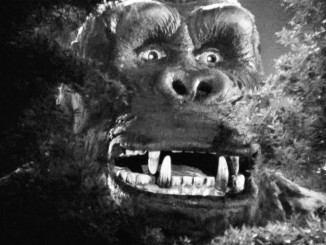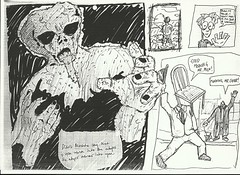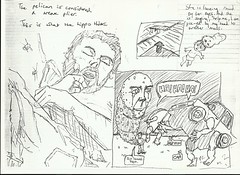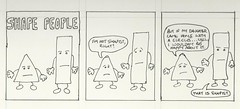Below is a list of documentaries about exploitation/grindhouse/b-movies and, where possible, links to where you can find them on-line. Consider it a public service. So feel free to skip this intro and scroll down to the links instead…
Lately, and by lately I mean my entire life, I’ve been watching a lot of cheap, cheerful exploitation movies. Don’t get me wrong, I love cinema full-stop. I’m happy to watch a respectable, Oscar winner or an art-house film. For me, as for so many others (you know who you are), film is a drug. All of my movie-watching has always been about dragging myself through the celluloid streets for one more angry fix; an attempt to recapture that first high of watching a King Kong/The Day the Earth Stood Still double-bill when I was three or four. Exact details are obscured by time. Only traces remain. I was in the spare room, not my bedroom. Put there for a nap maybe? There was a small TV in there, old enough (this would have been 1981/82) that it had a dial for changing the channels. Certain images are seared into my brain. Kong pushing the trees aside, light emanating from Gort’s visor. These visions changed me as fully as any later, more clearly remembered, more ‘real’, life experience.


Film as drug: If a classy, prestige Hollywood picture is an expensive bottle of wine, exploitation and B-movies are cheap amphetamine. A quick sleazy, scuzzy buzz compared to the mellow high of the prestige picture. Not that it is simply a question of budget. Tobe Hooper’s Lifeforce was one of the most expensive movies of it’s day, but has B-Movie spirit coursing through every frame. Indeed, we might argue that post-Star Wars (or even post-Jaws) the vast majority of Hollywood’s output has actually just been big budget B-movies. For the true film junkie, however, there is no real distinction. Example: Scorsese’s love of 1953’s cheap, sci-fi quickie Invaders from Mars (particularly it’s set design and use of colour) is made manifest by in the opening scene of his own, far more “respectable” Alice Doesn’t Live Here Anymore.
At this point I should point out that I am aware that there are proper distinctions between the terms ‘exploitation movie‘, ‘grindhouse‘ and ‘B-Movie‘, but this is a blog post people, not a Film Studies journal article so let’s just agree to use them in an interchangeable, somewhat colloquial sense. It’s true that no actual B-movie has existed for decades, while most of the grindhouse theaters and drive-ins that showed exploitation movies have long since closed down and been replaced by the vanilla spectacle of the multiplex. So let’s treat it like the definition of obscenity: we’re not sure what it is but we know it when we see it. No-one has ever mistaken Maniac Cop for Driving Miss Daisy, dig?

Driving Miss Daisy

Maniac Cop





